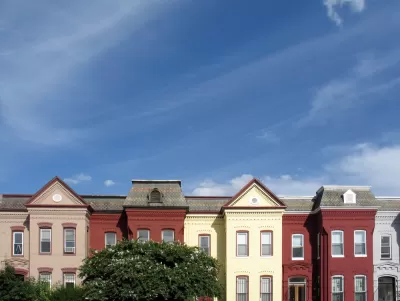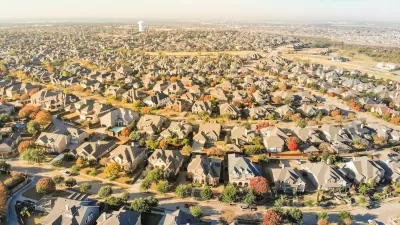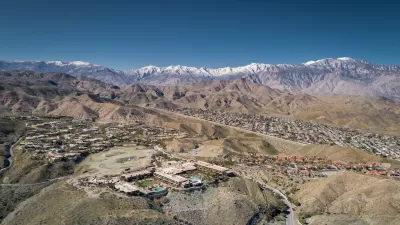Over the last three decades, the D.C. region has seen the most development in far-flung exurbs disconnected from area jobs and transit networks.

A report from the Brookings Institution claims that new housing in the Washington, D.C. region is too dispersed, failing to take advantage of the area's "highly centralized" public transportation and job centers. "Large employment centers and transit infrastructure are durable features of the built environment that persist for many decades. Therefore, a climate-friendly growth strategy for the region would concentrate new housing, retail, and services around these existing locations." But as Jenny Schuetz and Matt Ring write, "[t]he vast majority of new homes there have been built in low-density exurban or suburban counties—well outside existing public transportation networks. The fastest-growing communities are over 20 miles from the region’s primary employment center."
The report illustrates the growth of housing in the region's different areas and concludes that the "region’s housing growth over the past 30 years has mixed implications for climate impacts," as rates of construction grow for both multi-family buildings near the urban core single-family homes in car-dependent exurban communities. The authors also warn that "[t]he absence of development in job- and transit-rich centrally located neighborhoods throughout the District, Fairfax County, and Montgomery County," a result of opposition from homeowners and low-density zoning laws, "harm[s] more than the physical environment." These anti-growth efforts "exacerbate long-standing economic and racial inequality and push low-income households into longer commutes from distant exurbs."
FULL STORY: The Washington, DC region has built too much housing in the wrong places

Alabama: Trump Terminates Settlements for Black Communities Harmed By Raw Sewage
Trump deemed the landmark civil rights agreement “illegal DEI and environmental justice policy.”

Study: Maui’s Plan to Convert Vacation Rentals to Long-Term Housing Could Cause Nearly $1 Billion Economic Loss
The plan would reduce visitor accommodation by 25% resulting in 1,900 jobs lost.

Why Should We Subsidize Public Transportation?
Many public transit agencies face financial stress due to rising costs, declining fare revenue, and declining subsidies. Transit advocates must provide a strong business case for increasing public transit funding.

Paris Bike Boom Leads to Steep Drop in Air Pollution
The French city’s air quality has improved dramatically in the past 20 years, coinciding with a growth in cycling.

Why Housing Costs More to Build in California Than in Texas
Hard costs like labor and materials combined with ‘soft’ costs such as permitting make building in the San Francisco Bay Area almost three times as costly as in Texas cities.

San Diego County Sees a Rise in Urban Coyotes
San Diego County experiences a rise in urban coyotes, as sightings become prevalent throughout its urban neighbourhoods and surrounding areas.
Urban Design for Planners 1: Software Tools
This six-course series explores essential urban design concepts using open source software and equips planners with the tools they need to participate fully in the urban design process.
Planning for Universal Design
Learn the tools for implementing Universal Design in planning regulations.
Smith Gee Studio
Alamo Area Metropolitan Planning Organization
City of Santa Clarita
Institute for Housing and Urban Development Studies (IHS)
City of Grandview
Harvard GSD Executive Education
Toledo-Lucas County Plan Commissions
Salt Lake City
NYU Wagner Graduate School of Public Service




























